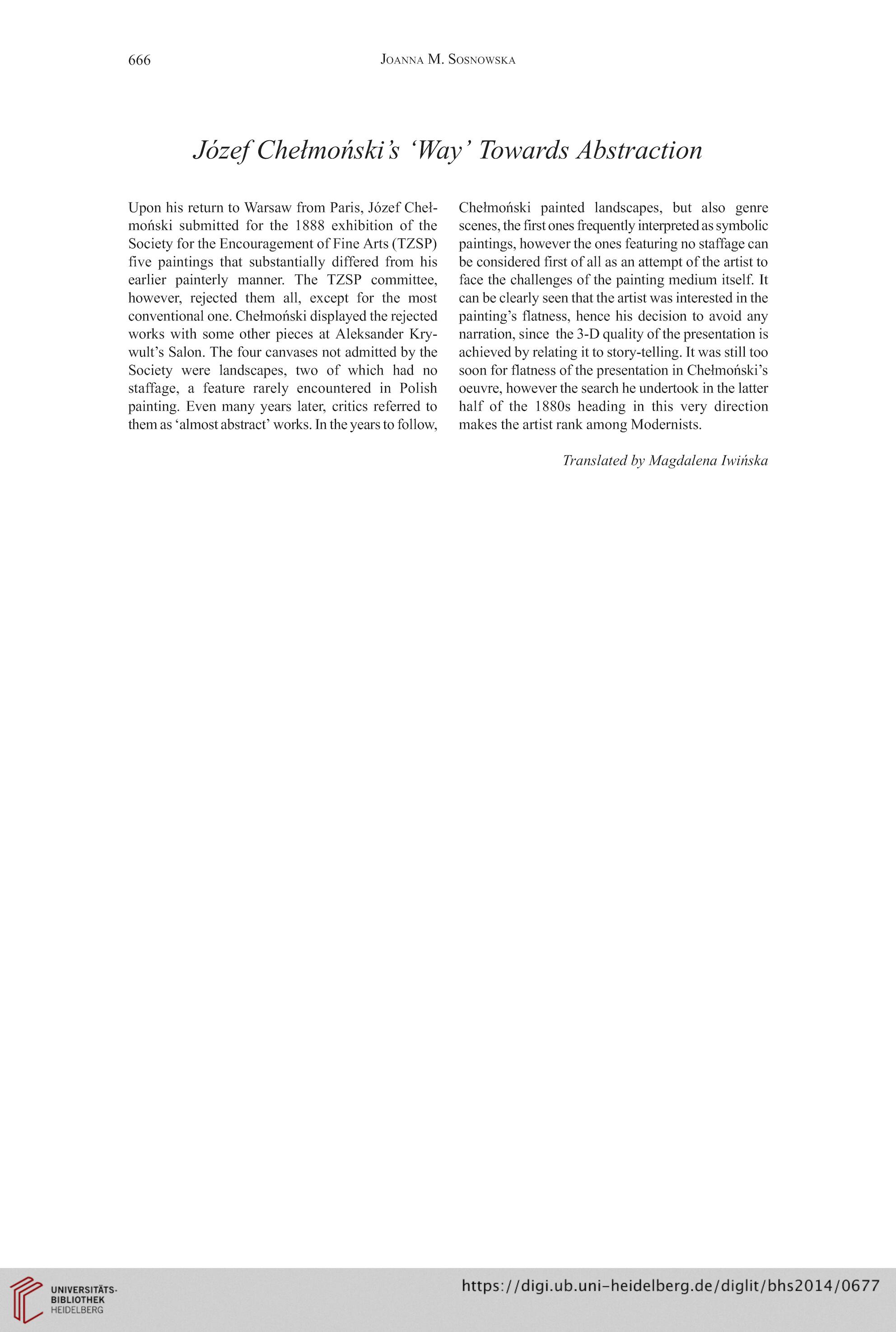666
Joanna M. Sosnowska
Józef Chełmoński s ‘Way ’ Towards Abstraction
Upon his return to Warsaw from Paris, Józef Cheł-
moński submitted for the 1888 exhibition of the
Society for the Encouragement of Fine Arts (TZSP)
five paintings that substantially differed from his
earlier painterly manner. The TZSP committee,
however, rejected them all, except for the most
conventional one. Chełmoński displayed the rejected
works with some other pieces at Aleksander Kry-
wulf s Salon. The four canvases not admitted by the
Society were landscapes, two of which had no
staffage, a feature rarely encountered in Polish
painting. Even many years later, critics referred to
them as ‘almost abstract’ works. In the years to follow,
Chełmoński painted landscapes, but also genre
scenes, the first ones frequently interpreted as symbolic
paintings, however the ones featuring no staffage can
be considered first of all as an attempt of the artist to
face the challenges of the painting medium itself. It
can be clearly seen that the artist was interested in the
painting’s flatness, hence his decision to avoid any
narration, since the 3-D quality of the presentation is
achieved by relating it to story-telling. It was still too
soon for flatness of the presentation in Chełmońskim
oeuvre, however the search he undertook in the latter
half of the 1880s heading in this very direction
makes the artist rank among Modernists.
Translated by Magdalena Iwińska
Joanna M. Sosnowska
Józef Chełmoński s ‘Way ’ Towards Abstraction
Upon his return to Warsaw from Paris, Józef Cheł-
moński submitted for the 1888 exhibition of the
Society for the Encouragement of Fine Arts (TZSP)
five paintings that substantially differed from his
earlier painterly manner. The TZSP committee,
however, rejected them all, except for the most
conventional one. Chełmoński displayed the rejected
works with some other pieces at Aleksander Kry-
wulf s Salon. The four canvases not admitted by the
Society were landscapes, two of which had no
staffage, a feature rarely encountered in Polish
painting. Even many years later, critics referred to
them as ‘almost abstract’ works. In the years to follow,
Chełmoński painted landscapes, but also genre
scenes, the first ones frequently interpreted as symbolic
paintings, however the ones featuring no staffage can
be considered first of all as an attempt of the artist to
face the challenges of the painting medium itself. It
can be clearly seen that the artist was interested in the
painting’s flatness, hence his decision to avoid any
narration, since the 3-D quality of the presentation is
achieved by relating it to story-telling. It was still too
soon for flatness of the presentation in Chełmońskim
oeuvre, however the search he undertook in the latter
half of the 1880s heading in this very direction
makes the artist rank among Modernists.
Translated by Magdalena Iwińska




